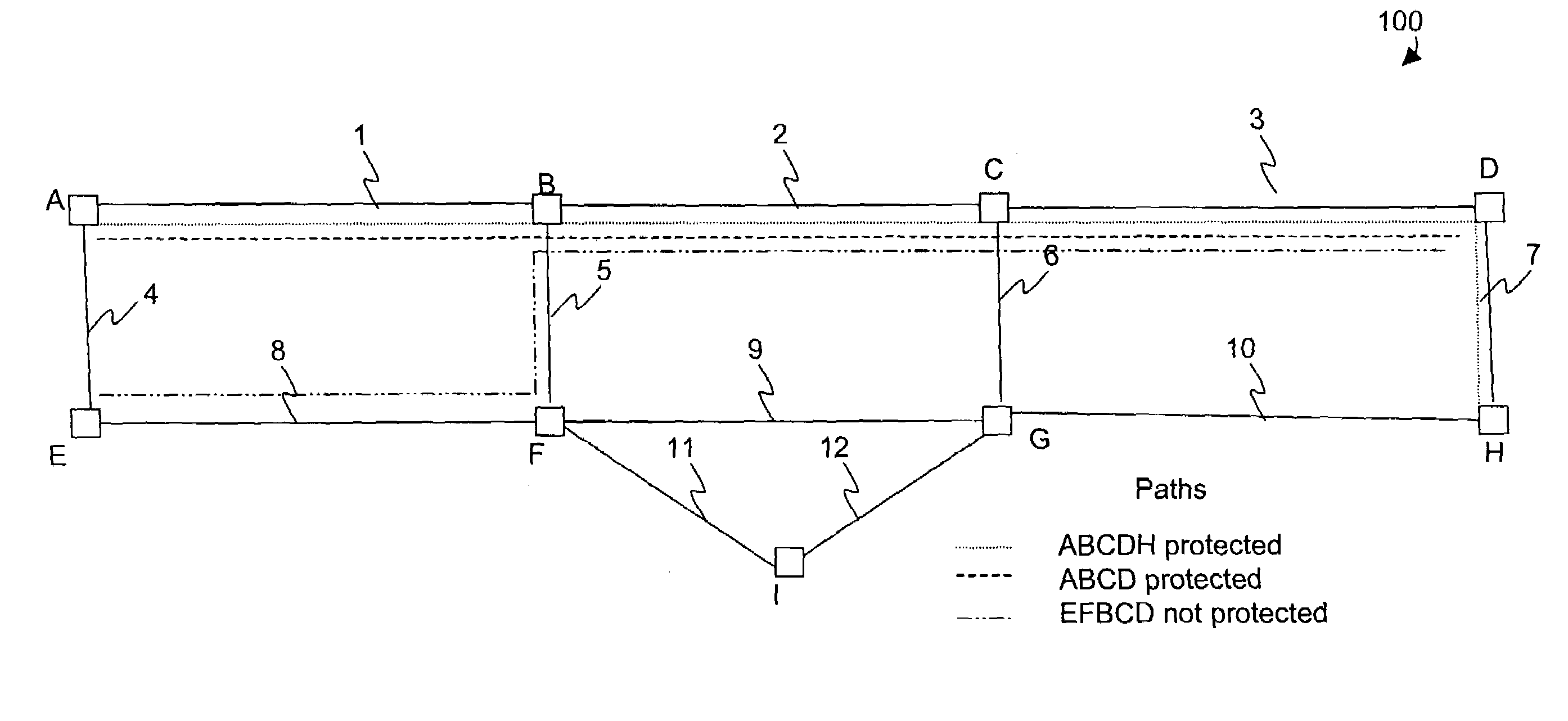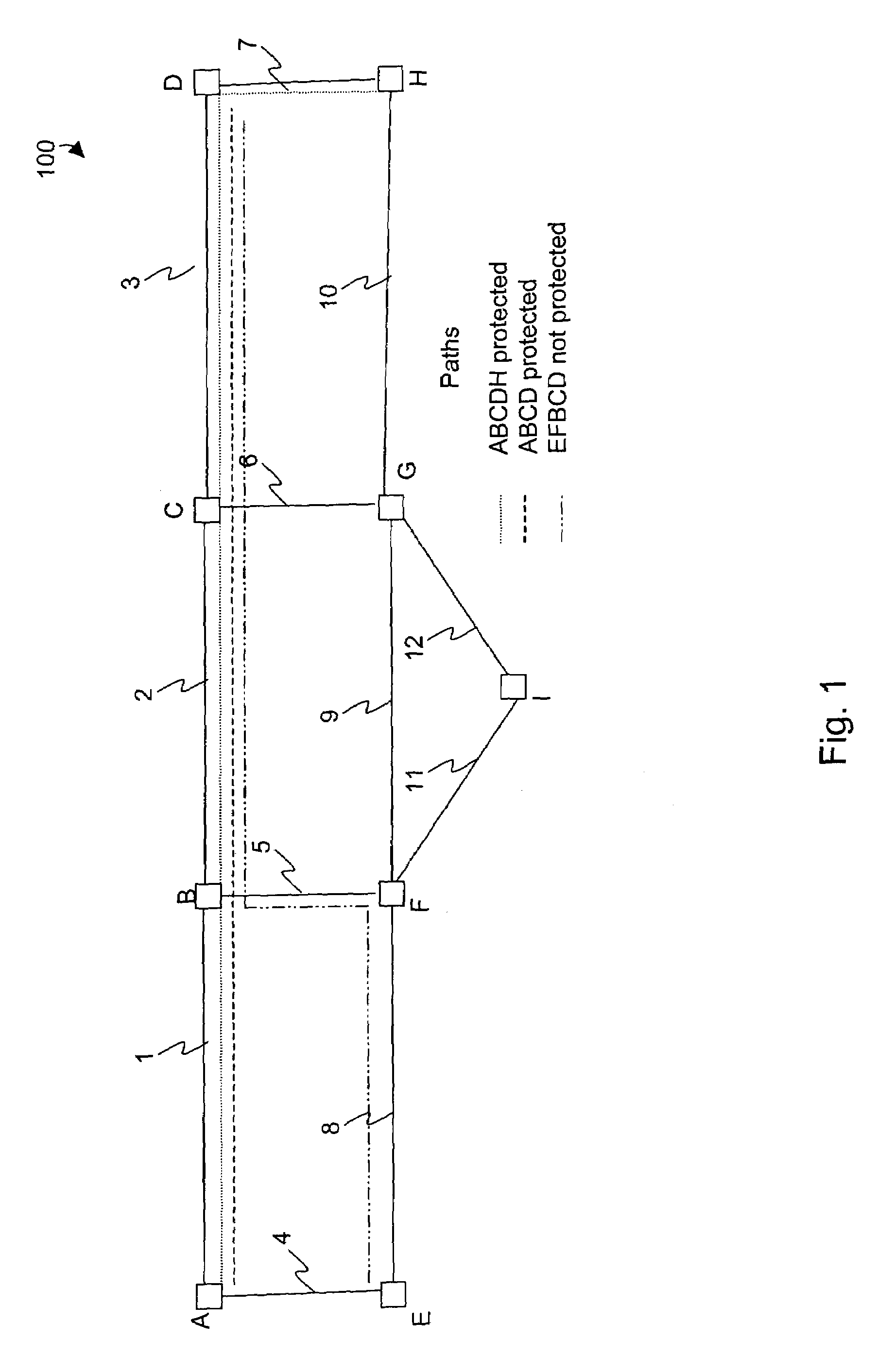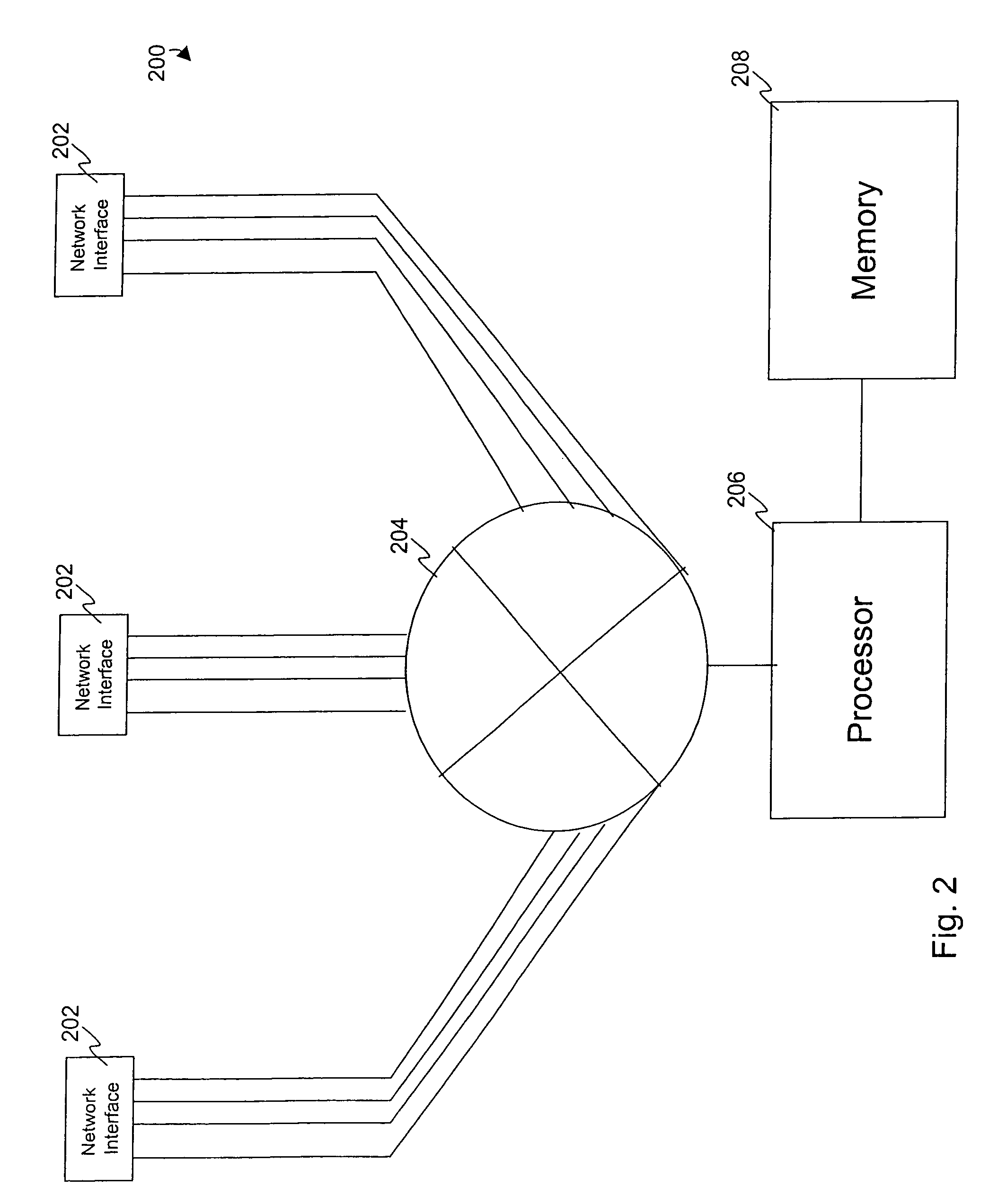Line-level path protection in the optical layer
a path protection and optical layer technology, applied in the field of data networking, can solve the problems of extremely wasteful transmission capacity, difficult to achieve the objective of rerouting protected traffic within 50 milliseconds, and problems such as problems such as arising
- Summary
- Abstract
- Description
- Claims
- Application Information
AI Technical Summary
Benefits of technology
Problems solved by technology
Method used
Image
Examples
Embodiment Construction
[0017]The present invention will be described with reference to a specific example, a mesh network employing a hierarchical digital transmission standard. In the example as described herein, the hierarchical digital transmission standard is the SONET standard although the present invention is also readily applicable to other well-known standards such as SDH and G.709. Transmission in accordance with SONET, SDH, or G.709 is described in various standards and specifications published by the ITU, ETSI, ANSI, and Telcordia (formerly Bellcore), the contents of which are herein incorporated by reference in their entirety.
[0018]A mesh network to which embodiments of the present invention may be applied is depicted in FIG. 1. A mesh network 100 includes nodes A-I interconnected by links 1–12. Each link is assumed to be bidirectional. In the implementation to be described herein, each link represents OC-n, e.g., OC-48, communications, i.e., a payload data rate of approximately 2.4 Gbps. The ...
PUM
 Login to View More
Login to View More Abstract
Description
Claims
Application Information
 Login to View More
Login to View More - R&D
- Intellectual Property
- Life Sciences
- Materials
- Tech Scout
- Unparalleled Data Quality
- Higher Quality Content
- 60% Fewer Hallucinations
Browse by: Latest US Patents, China's latest patents, Technical Efficacy Thesaurus, Application Domain, Technology Topic, Popular Technical Reports.
© 2025 PatSnap. All rights reserved.Legal|Privacy policy|Modern Slavery Act Transparency Statement|Sitemap|About US| Contact US: help@patsnap.com



